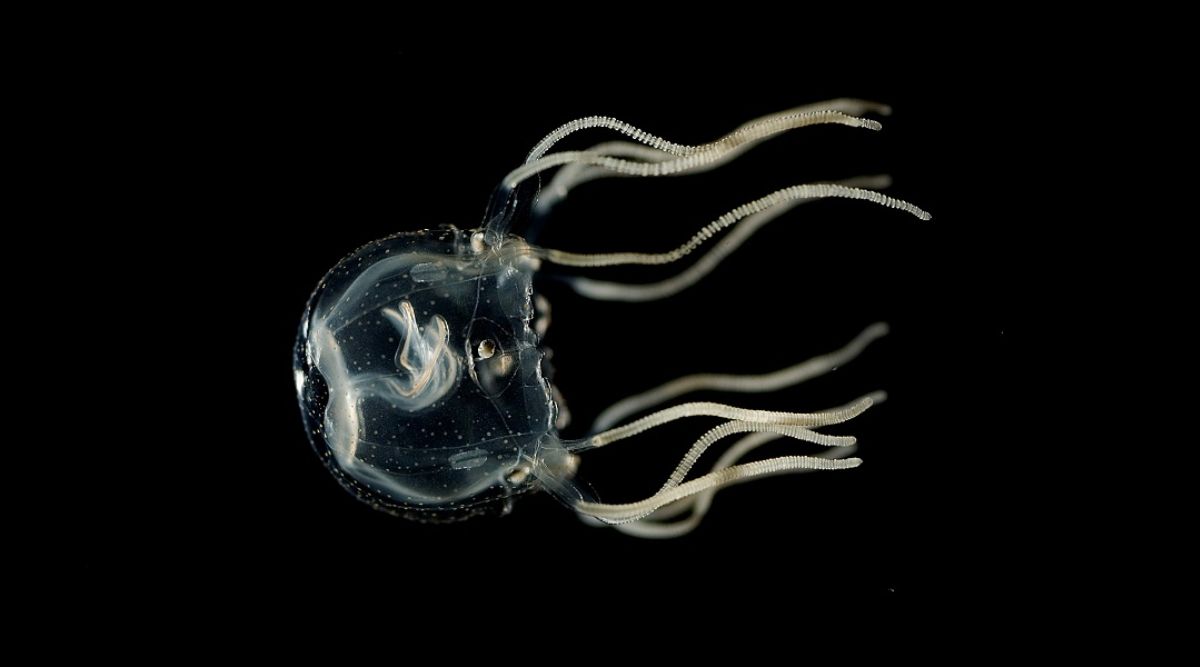📣 For more lifestyle news, click here to join our WhatsApp Channel and also follow us on Instagram
One of the world’s most venomous creatures, this animal’s poison can stop a human heart within minutes
The box jellyfish may be small and nearly invisible, but its venom has a staggering capacity for harm
 Discover why the box jellyfish (Chironex fleckeri) is one of the deadliest creatures in the ocean (Source: Wikimedia Commons)
Discover why the box jellyfish (Chironex fleckeri) is one of the deadliest creatures in the ocean (Source: Wikimedia Commons)If you’ve ever spent time near warm ocean waters, you’ll have heard signs of warning about an invisible jellyfish that looks delicate and harmless, but to not be fooled by it.
Often lurking just below the surface of warm tropical waters, this marine creature delivers venom so potent it can stop a human heart in minutes.
A member of the Cubozoa class, box jellyfish are distinct in appearance: they have a transparent, cube‑shaped bell up to 30 cm across and can sport tentacles stretching up to 10 feet (3 m). These tentacles contain millions of microscopic harpoon‑like cells called nematocysts, which inject venom when triggered.
Unlike typical jellyfish that drift, box jellyfish are active swimmers, propelled by a muscular velarium that can push them through water at speeds of 1.5 m/s (about 4 mph).
Why the box jellyfish is so lethal
Unusual venom potency: Chironex fleckeri, known as the Australian box jellyfish or “sea wasp,” is often labelled the most venomous marine animal. Its venom disrupts cells by creating pores, triggering cardiac arrest and rapid tissue destruction, sometimes in as little as 2 to 5 minutes.
Deadly dosage: A single jellyfish carries enough venom to kill more than 60 adults. In Australia alone, box jellyfish have caused at least 69 deaths since the late 19th century, according to the Environmental Literary Council. Globally, 50 to 100 deaths occur each year from box jellyfish stings.
Speed of action: The venom acts with what experts describe as “blinding speed,” affecting the cardiovascular system almost instantly. Even when survivors receive antivenom, damage inflicted before treatment may require surgery or cause long-term impairment.
 A Carribean box jellyfish is pictured here. (file)
A Carribean box jellyfish is pictured here. (file)
Understanding the sting
When a tentacle brushes against skin, nematocysts fire and inject venom. Damage can include intense burning, whiplash-like welts, nausea, headaches, anxiety, and cardiac arrest in severe cases.
Even if death does not follow immediately, victims often experience long-term consequences like scarring, chronic pain, or psychological trauma.
First aid & prevention
- Apply vinegar (acetic acid) to neutralise undischarged nematocysts within 30+ seconds of contact, according to Australian Geographic.
- Avoid rubbing the wound, which can trigger further venom release.
- Wear protective clothing like wetsuits or lycra suits in stinger-prone waters, these can prevent nematocysts from recognizing your skin as prey.
- Seek emergency medical care immediately. Antivenom exists and must be administered rapidly, ideally within minutes, to be effective.
In recent years, scientists at the University of Sydney used CRISPR gene-editing technology to develop a molecular antidote. Applied within 15 minutes, it may prevent tissue damage and pain, though whether it protects against cardiac failure remains under study.
The box jellyfish may be small and nearly invisible, but its venom has a staggering capacity for harm. As its range expands, and as coastal tourism rises, the need for awareness, prevention, and rapid treatment is more pressing than ever. Swimming in known “stinger season” zones without precaution is a risk no one should take.
📣 For more lifestyle news, click here to join our WhatsApp Channel and also follow us on Instagram



- 01
- 02
- 03
- 04
- 05
























